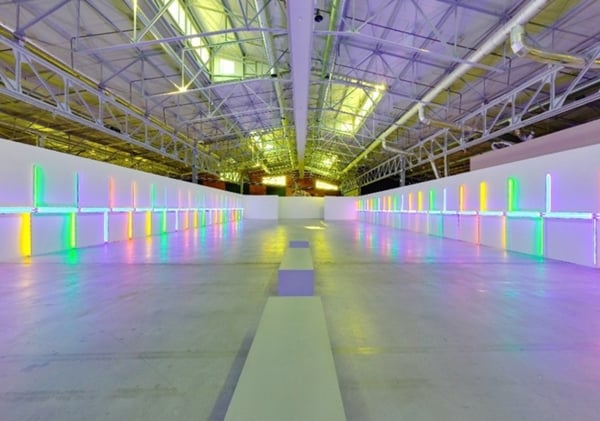
Opening officially to the public June 12, 2015, Garage Museum of Contemporary Art is celebrating the completion of its Rem Koolhaas-designed building in Gorky Park with exhibitions, performances, screenings, and events. These will introduce visitors to the broad range of Garage programs and showcase the new Museum spaces.
The 5,400-square-meter building will feature a façade consisting of a translucent double-layer of polycarbonate that is elevated two meters from the ground to visually reconnect the Museum’s interior to the nearby park.
The new building will provide Garage with opportunities for programming through five exhibition galleries, plus an auditorium, resource Room, and education spaces.
Inaugural projects will include interactive exhibitions by Yayoi Kusama (b. 1929, Matsumoto, Japan) and Rirkrit Tiravanija (b. 1961, Buenos Aires, Argentina) with Julius Koller (b. 1939, Bratislava, Czechoslovakia); as well as the inaugural Garage Atrium Commission by Erik Bulatov (b. 1933, Sverdlorsk, USSR); and a site-specific installation by Katharina Grosse (b. 1961, Freiburg, Germany).
Garage Gorky Park overview.
Photo: © Office for Metropolitan Architecture (OMA). Courtesy OMA.
The Museum founder, Dasha Zhukova, says there will be a strong emphasis on education. To this end the Museum will offer workshops, lectures, and tours relating to the exhibitions, as well as training programs that support the local Moscow art scene.
Inspired by Rem Koolhaas’s interests in preserving aspects of the original 1960s architecture, Garage Teens Team has focused on this decade as one that formed the ideals of their parents. In advance of the opening, the cohort have conducted interviews and researched local modernist architecture, Soviet comedies, music, and everyday artifacts to develop their own perspective on the period, which they will share with visitors in Garage Resource Room. Throughout the Summer, Garage Mediators—the first group in Russia to undergo specialist training in body language and public speaking, as well as architecture, art, and museum studies—will lead visitors through the building, introducing Garage’s institutional history and the Soviet Modernist structure it will call home.
Garage Museum.
Photo: screenshot from YouTube.
Garage Museum.
Photo: screenshot from YouTube.
Garage Gorky Park pavilion entrance.
Photo: © Office for Metropolitan Architecture (OMA). Courtesy OMA.